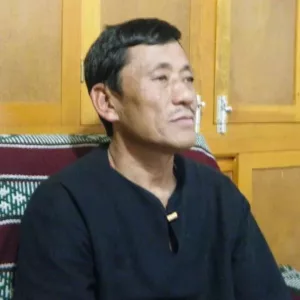Published on: July 3rd, 2023, by Aue Therchen
Geographical Location of Chubu Tshachu
Nestled on a steep hillside, shielded from the sun, lies Chubu Tshachu in Punakha, Bhutan. It sits beside a vast stream, meandering through the gully, connecting two distant hill ranges. Below, the Pochu River winds its way through fertile terraced rice fields.
The Curative Thermal Springs
Chubu Tshachu is renowned for its abundant and hot spring water. Surpassing the temperature of Gasa Hot Spring, the medicinal properties of the water here seem more potent, discernible by its distinct aroma and taste. Legend has it that Guru Rimpoche himself blessed and created this divine Tshachu.
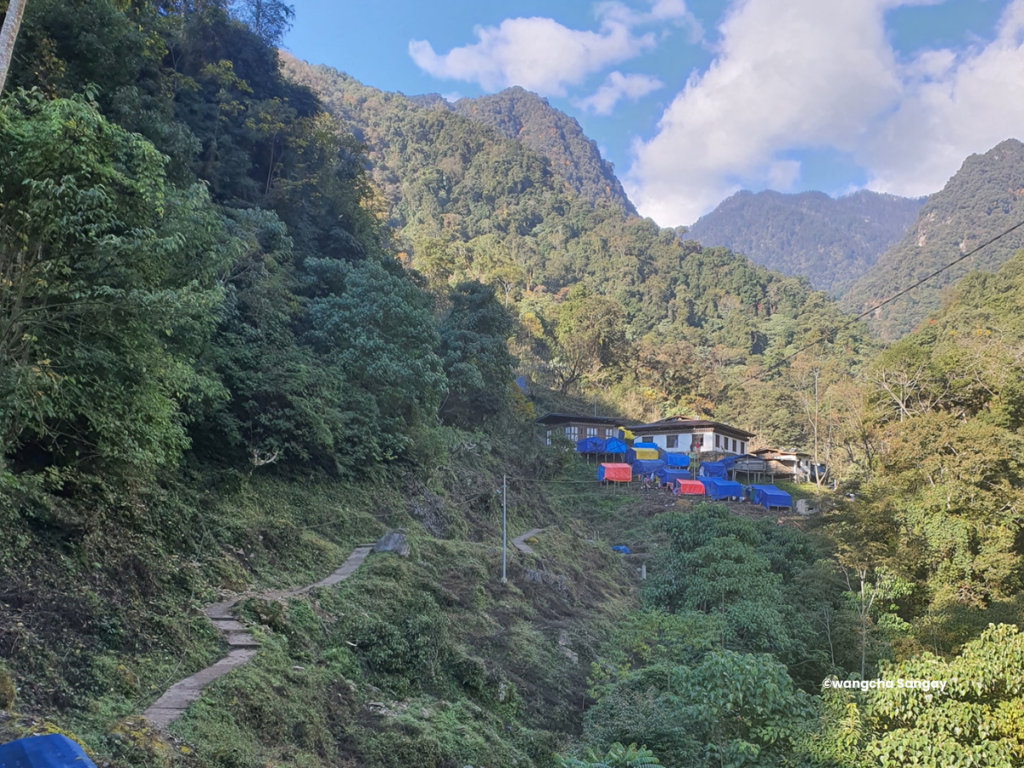
Architecture of the Chubu Tsachu Hot Spring Pools
At Chubu Tshachu, there are two separate hot spring pool houses. The upper pool consists of four open compartments, demarcated by timber beam dividers at the surface level, which otherwise would form a single large pool. Lower down, under a single roof, there are two distinct pools: one small and another larger one, divided into nine open compartments. All three pools are well-roofed, while the surrounding floors are made of concrete. The pools have wooden floors, and the two larger ones feature wood-paneled sides to retain heat and offer enhanced relaxation.
Bathing & Gendered Springs
Within the premises, there are designated compartments for bathing before entering the pools for a soothing soak. However, there are no water taps for direct washing; visitors must use buckets or jugs to scoop water from the pools and carry it to the bathing area. This arrangement proves convenient since the bathing and changing compartments are housed under the same hall. The top pool receives water from the male spring, while the small pool adjacent to the larger one is fed by the female spring. The method of determining the gender of the spring source remains unknown, but the male water flows through a man-made inlet resembling a phallic shape, while the female spring water enters through an inlet formed like a mound.
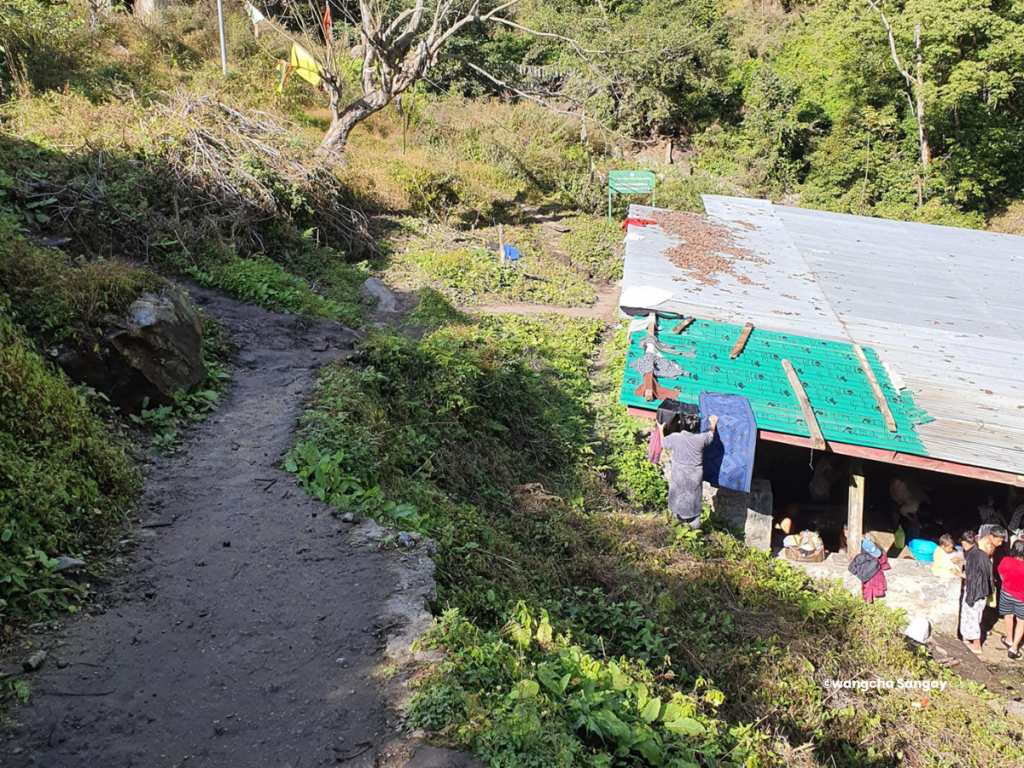
Water Temperature, Pool Atmosphere, & Etiquette
The pools boast an abundance of fresh air and natural light, ensuring comfort even during peak hours. The larger pool offers a truly hot experience, while the upper pool provides a very warm sensation, and the small pool’s warmth is agreeable. Surprisingly, the hot spring pools are primarily intended for body soaking rather than cleansing. Most visitors adhere to this practice, but, as expected, there are occasional deviations. However, complete nudity is not permitted, except for young children. The pools represent a unisex facility, open to individuals of all ages. Men typically wear briefs or boxers, while women, especially the younger ones, wear tops paired with shorts or slacks. This unisex pool characteristic is a distinctive charm of Bhutan’s hot springs, akin to a dry beach, fostering an open and jovial atmosphere. It provides an ideal environment for both the young at heart and those seeking romance.
Chubu Tshachu Hot Spring Complex & Infrastructure
The hot spring complex features a well-paved, easy-to-navigate concrete footpath branching out from the entrance. It divides into two paths leading to the different pool sites. Along the way, one can find separate male and female toilets positioned amidst the tented accommodations and hot spring pools. However, the toilet facilities are quite limited, necessitating the need for more sanitary facilities to maintain cleanliness in the area. Furthermore, to accommodate the significant number of visitors, there is a pressing need to develop more comfortable semi-structures or permanent accommodations. Most visitors stay for a minimum of 7 nights, with some extending their stays up to 21 days. Families and groups, primarily of similar age demographics, comprise the majority of guests.
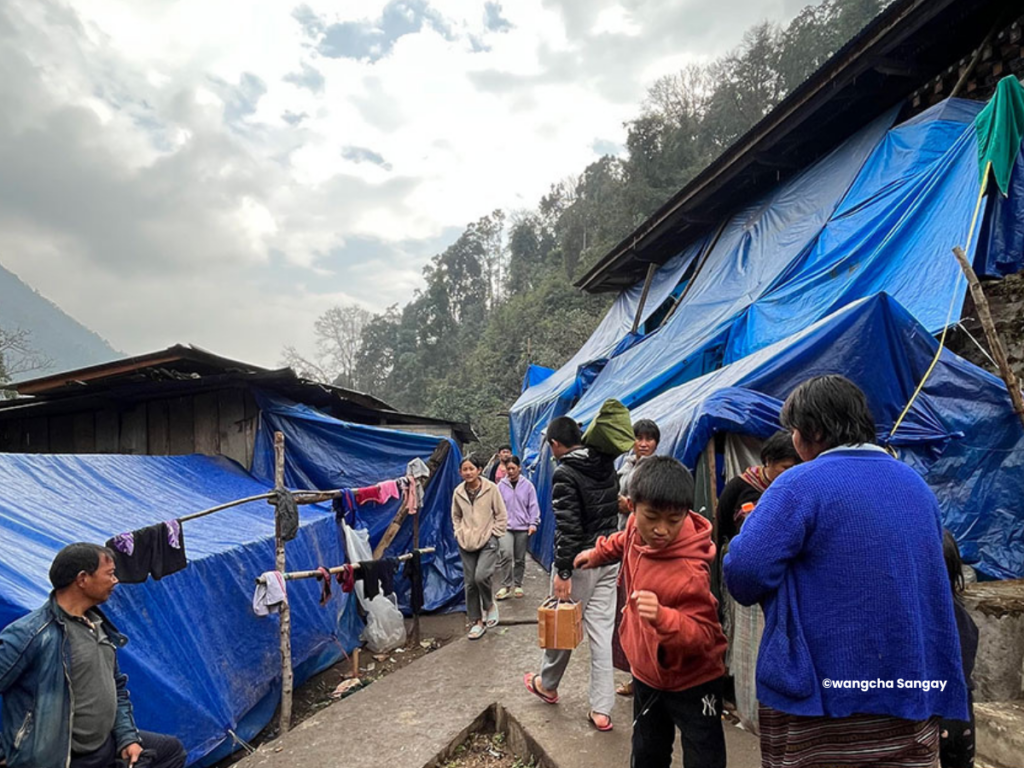
Water Source & Supply Challenges at Tshachu
The hill range above the hot springs boasts an abundant freshwater source. During my stroll along the road carved into the side of Tshachu hill, I witnessed water flowing from various points towards the motor road. Unfortunately, the Tsachu complex suffers from water supply issues, creating challenges for cooking, washing, and even toilet flushing. Fortunately, the solution to this problem seems straightforward, as the water source lies readily available in the forest at a higher elevation than the Tshachu complex. By installing pipes to transport water from the source to six conveniently located tanks and distributing it through polythene pipes, the water supply problem can be resolved easily. In dire circumstances, water can even be tapped from the nearby stream, as evidenced by the existing large pipe carrying water to another village.
Tented Accommodations & Culinary Facilities
Currently, the accommodations at Chubu Tshachu mainly consist of pyramid-shaped structures made of plastic sheets placed on wooden platforms supported by four poles driven into the ground. Although they appear precarious on the hillside and generally uncomfortable and unhygienic, they do provide protection from rain, despite the cold. The temporary nature of these accommodations means that they lack electricity. However, for an additional fee, guests can rent cooking gas and stoves to supplement their nightly rent for the plastic sheet cave-like dwellings.
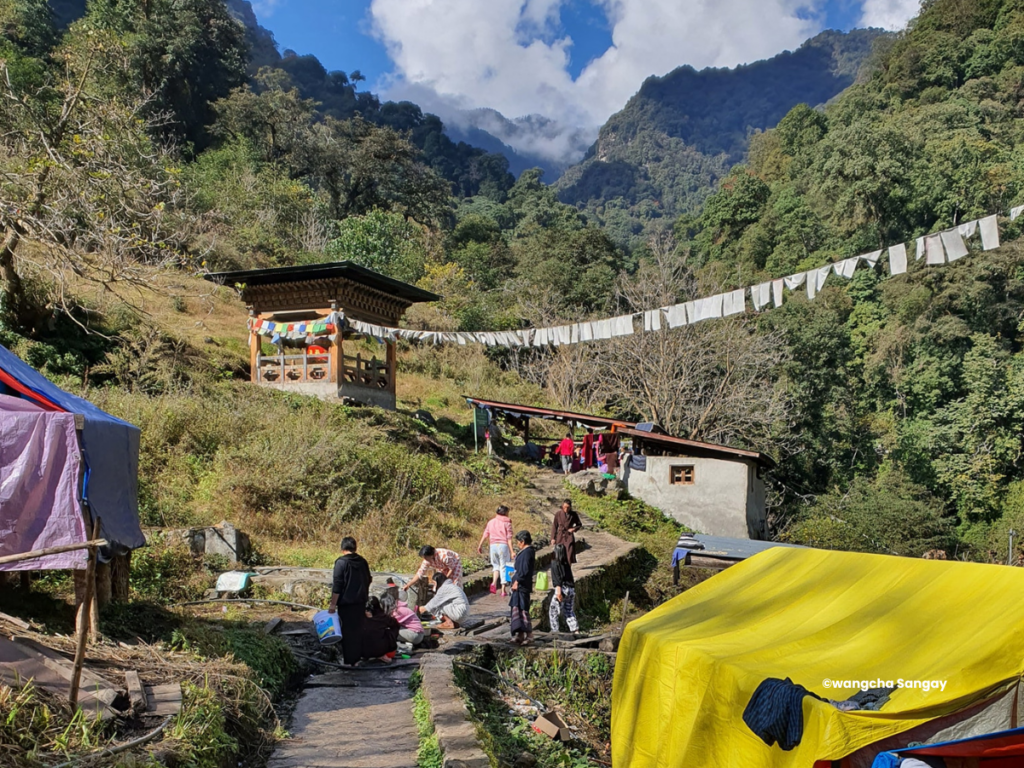
Guest Houses & Booking Challenges
Chubu Tshachu offers three guest houses, albeit with limited capacity, comprising a total of approximately 12 rooms of varying sizes. Typically, advance bookings are not accepted by the privately appointed management overseeing Punakha Dzongkhag Administration. Due to the high demand for rooms and tents, the management is unable to reserve any vacated spaces for future arrivals. To secure a room, visitors must contend with the rush and availability constraints. However, the manager aspires to construct better accommodations if he can obtain the necessary approvals from the Dzongkhag Administration. It is my hope that the government or private management recognizes the urgent need for development at Chubu Tshachu, similar to the remarkable transformation witnessed at Gasa Tshachu. While space within the Tshachu sites is limited, the vast open area along the motor road leading to the Tshachu complex can be thoughtfully developed in an eco-friendly manner.
Demand for Open Spaces & Sanitation Facilities at Tshachu
There is a growing need for open spaces equipped with toilet and water facilities to allow visitors to set up their own tents. A nominal fee can be charged for tent spaces, and the toilet facilities should be simple yet highly functional, requiring minimal maintenance. Tshachu in modern-day Bhutan has evolved into more than just a health spa—it has become a resort. When one envisions Tshachu, the mind conjures images of a health spa primarily catering to those with health conditions. However, in rugged Bhutan, devoid of sea beaches or captivating riverbanks for leisure, Tshachu serves as a haven for farmers seeking respite after toiling on their fields. It is a place of rejuvenation, social togetherness, and an idyllic holiday destination, particularly for the humble urban dwellers. Tshachu represents a space where people from all walks of life can shed their inhibitions and come together. During my visit, I encountered families from Tashi Yangtse, Bumthang, Tsirang, Haa, Paro, as well as Thimphu, Wangdue, and Punakha. It truly exemplifies a harmonious blending of individuals from various social backgrounds.
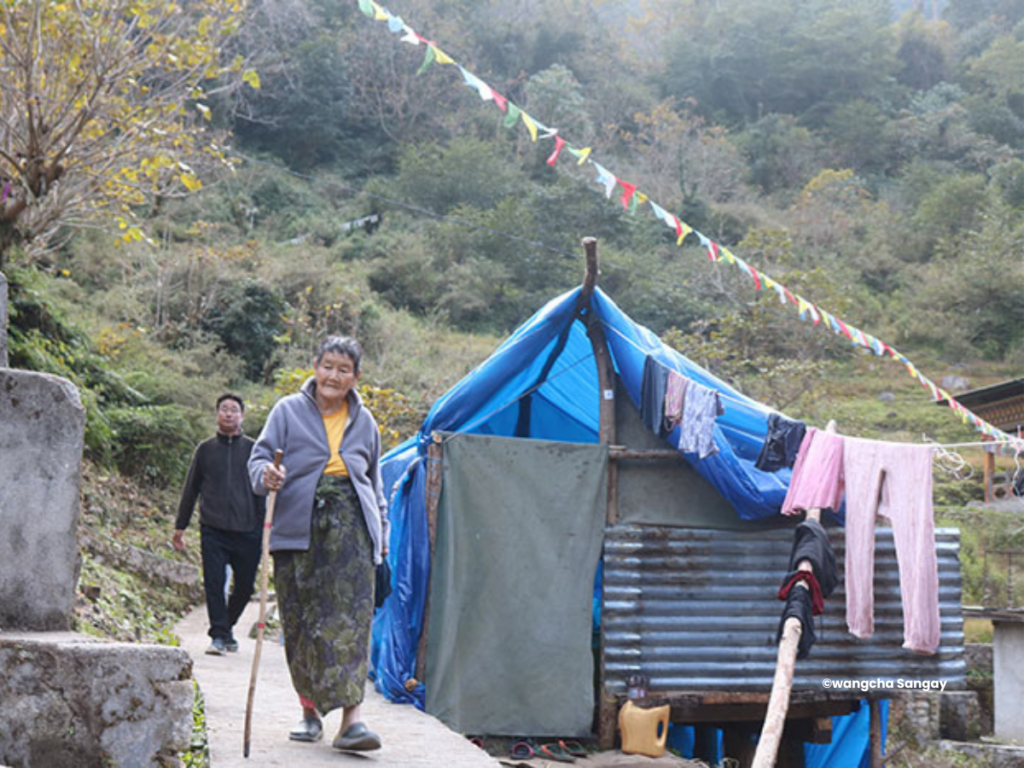
Observing the Changing Scene at Chubu Tshachu
The ambiance at the hot spring pools undergoes a transformation throughout the day. In the early morning, the scent of incense permeates the air as mantras and prayers fill the surroundings. Daytime is characterized by lively conversations and dialogues of all sorts. Evenings are filled with choral songs, folk tales, and occasional light-hearted political discussions. Late at night, a sense of tranquility descends upon the pools, as visitors savor beverages and snacks (usually discouraged) while luxuriating in the warm waters.
Pool Maintenance & Sanitation
When the pools are vacated, the management periodically drains the stale water, replenishing them with fresh spring water. While the exact frequency of this practice may vary, the continuous flow of spring water ensures that the pools are consistently replenished, with the excess water cascading over the brim.
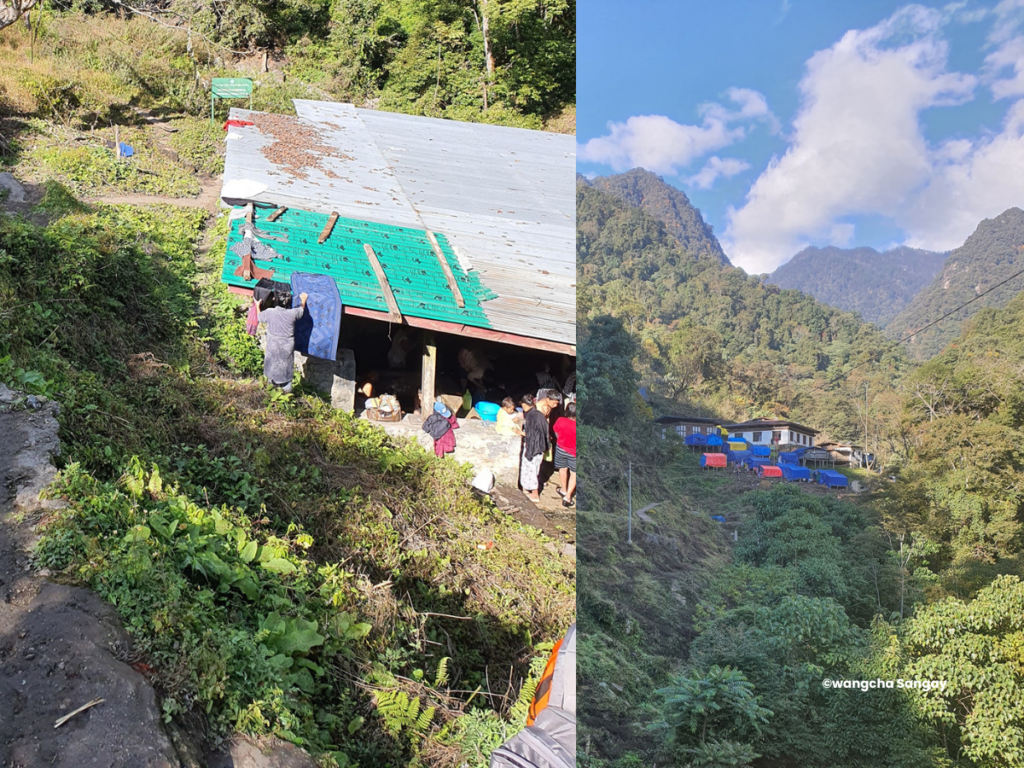
How to Reach Chubu Tshachu
From Haa, Paro, or Thimphu, make your way to Khuruthang Town. Cross the Khuruthang Bridge over the Puna Pochu Mochu and take a left, following the Pochu River bank until you reach another bridge that leads you to the other side. This location is known as Samdingkha and features ample parking space and a line of shops.
If you are driving from Wangdue or Bajo, do not cross the bridge to Khuruthang town. Instead, continue straight ahead.
Distance from Khuruthang to Samdingkha: 13 km (45 to 60 minutes’ drive).
The road from Khuruthang to Samdingkha village is plagued with potholes and narrow passages. It takes a minimum of 45 minutes in a high-clearance vehicle, and about an hour by car. It is advisable to hire a taxi, preferably a Bolero jeep, to ensure a smooth journey from Khuruthang to Tshachu. Although there are a few Boleros available at the Samdingkha Parking Lot, communication difficulties may pose challenges for prior booking. On-the-spot hiring is not guaranteed and often comes with higher rates. Alternatively, arrangements can be made for transportation from Tshachu to Khuruthang for the return journey. As of December 2021, the rate for a Bolero was Nu: 2500. Sharing the fare with other travelers heading in the same direction can make the journey more economical and comfortable for three passengers.
Distance from Samdingkha to Chubu Tshachu: Approximately 17 km (2.5 to 3 hours’ drive).
The road from Samdingkha to Chubu Tshachu is rugged and demanding, winding along the hillside overlooking the meandering Pochu River. After crossing the Pochu Bridge at Samdingkha, continue along the road until you reach a fork. Take the right turn, leading to a scenic view of the river. The road gradually ascends, occasionally dipping as it progresses. Unfortunately, reliable road signs at junctions are lacking, causing some groups to take wrong turns, resulting in hours of detours. Stay on the well-defined road that continues straight ahead at junctions. As the journey nears its end, the road veers away from the Pochu River, entering a small valley known as Tsafu. The final village, also referred to as Tsafu Village, is Nepdingkha, where Chubu Tshachu is located at the foot of the spire-shaped hill, home to the Tshachu Deity Ap Khachhep. As a gesture of respect and gratitude, I made two offerings of beer—one upon arrival, seeking refuge, and the other before departure, expressing gratitude.
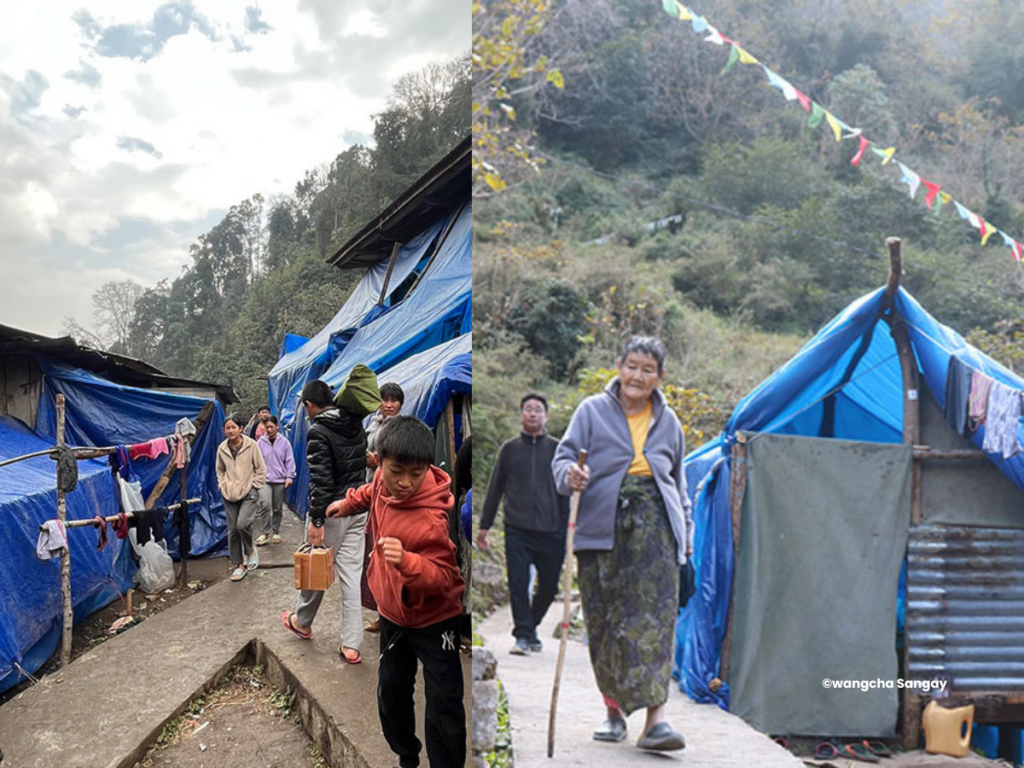
Tips & Future Road Improvements
To ensure a smooth journey, it is best to plan your visit during daylight hours, as traveling late in the evening increases the likelihood of taking wrong turns. Hiring a Bolero with an experienced driver is highly recommended. If traveling in your own vehicle, parking spaces are available along the road before reaching the Tshachu complex. These parked vehicles are generally safe. However, few drivers I spoke to expressed reluctance in embarking on a second trip to Tshachu.
I have been informed that road conditions between Khuruthang and Samdingkha, as well as from Samdingkha to Chubu Tshachu, are expected to improve within the next fiscal year.
Concluding Prayers
It is my sincere hope that the government considers categorizing all Tsachu roads, whether in Gasa, Punakha, Bumthang, Zhemgang, or Gelephu, as national highways rather than mere farm roads serving specific agricultural communities. Tshachu’s attract visitors from all corners of Bhutan, serving as holiday and leisure destinations, not solely as health spas for the ailing. Investment in developing infrastructure at Tsachu sites can yield significant returns. Additionally, the inclusion of several shops and restaurants within the Tsachu premises would enhance convenience and enjoyment for visitors while fostering healthy competition when monopolies are eliminated.
I fervently hope that the Punakha Dzongkhag Administration, in collaboration with either the government or private entities, undertakes a development project at Chubu Tsachu, akin to the successful transformation witnessed at Gasa Tshachu. Given the absence of flood risks, such an investment would be permanent and serve the entire nation, offering valuable services to a diverse range of individuals.
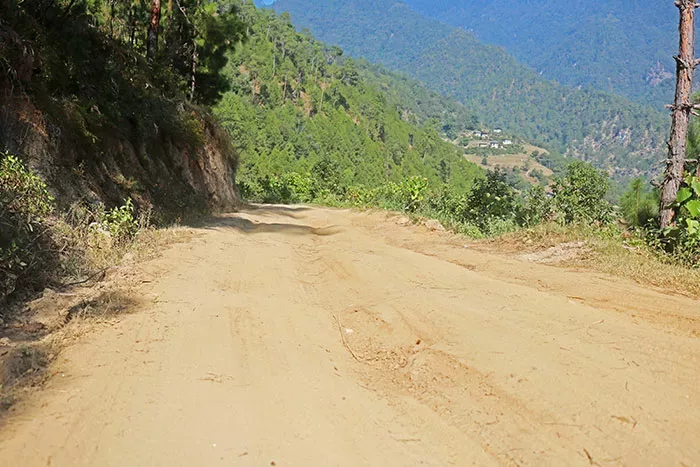
FAQs on Punakha Chubu Tsachu
Chubu Tsachu is located in Punakha, Bhutan. It’s situated on a steep hillside, next to a large stream that connects two hill ranges, with the Pochu River running below.
Chubu Tsachu features two separate hot spring pool houses. The upper pool is divided into four open compartments by timber beams, and the lower pool, under a single roof, contains two pools: a small one and a larger one divided into nine compartments. All pools have wooden floors and are roofed, with the larger ones featuring wood-paneled sides for heat retention and comfort.
The Chubu Tsachu hot springs have designated areas for bathing before entering the pools. Water from the pools is scooped into buckets or jugs for washing. Complete nudity is not permitted, except for young children, and the pools are unisex. Men typically wear briefs or boxers, and women often wear tops with shorts or slacks.
The hot spring complex has concrete footpaths, separate male and female toilets, and temporary accommodations primarily consisting of pyramid-shaped structures made of plastic sheets. The structures are placed on wooden platforms supported by poles. Guests can rent cooking gas and stoves for an additional fee. Chubu Tsachu also offers three guest houses with limited capacity, but no advance bookings are accepted.
From Haa, Paro, or Thimphu, you would first go to Khuruthang Town, cross the Khuruthang Bridge, and follow the Pochu River bank until you reach a bridge that leads to Samdingkha, which has parking and shops. If you’re coming from Wangdue or Bajo, you don’t cross the bridge to Khuruthang but continue straight ahead. The journey from Khuruthang to Samdingkha is about 13 km (45 to 60 minutes’ drive), and from Samdingkha to Chubu Tsachu is approximately 17 km (2.5 to 3 hours’ drive). It’s recommended to hire a high-clearance vehicle for the journey due to the condition of the roads.

